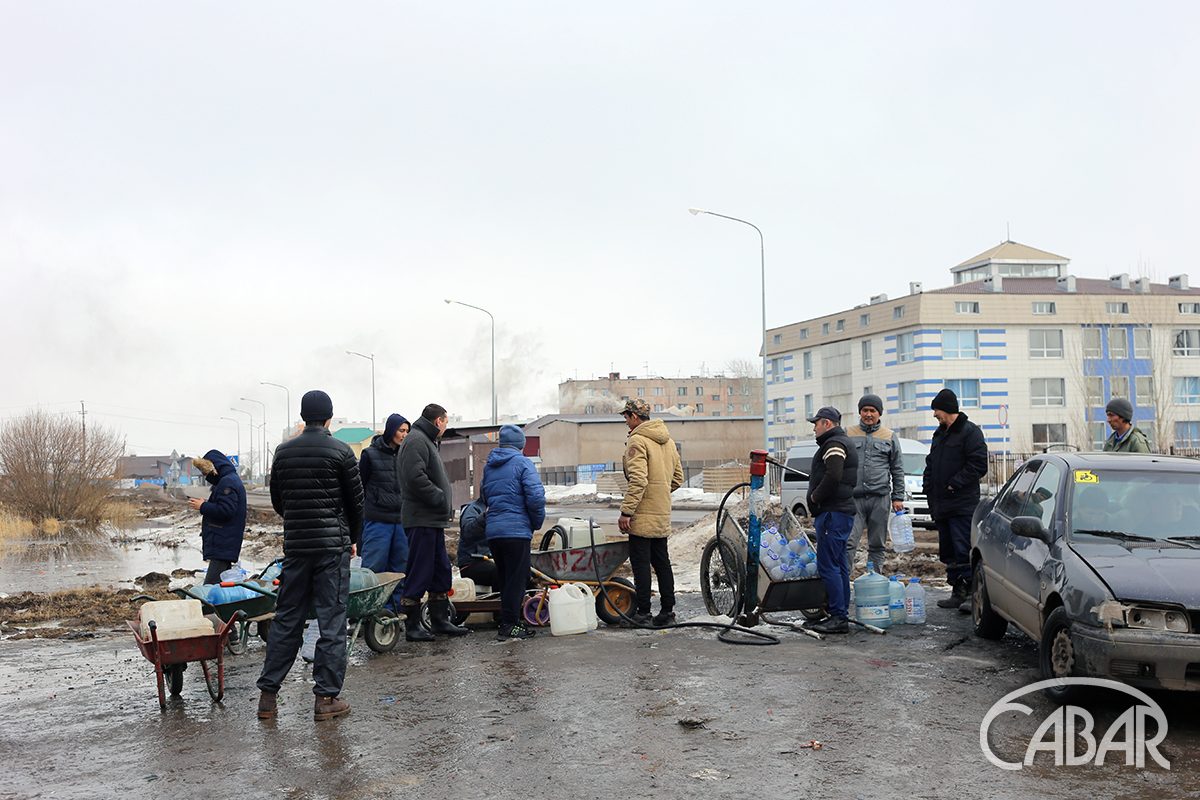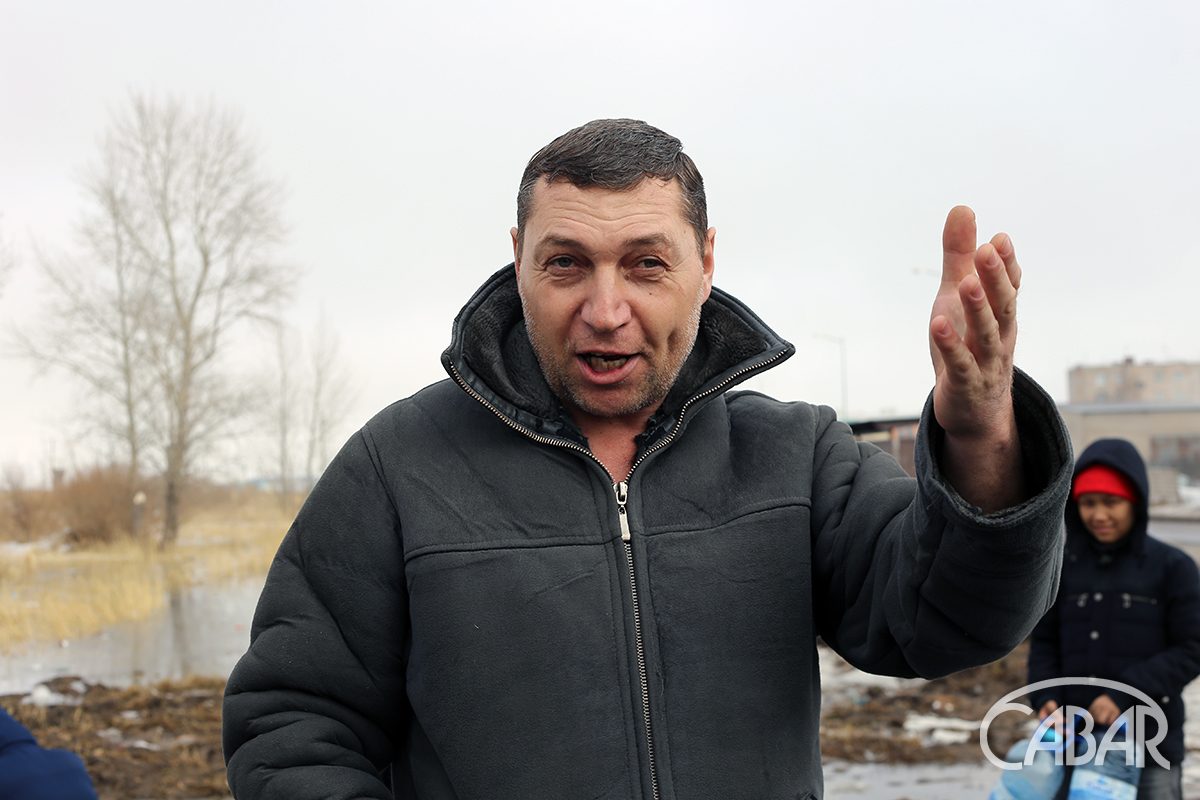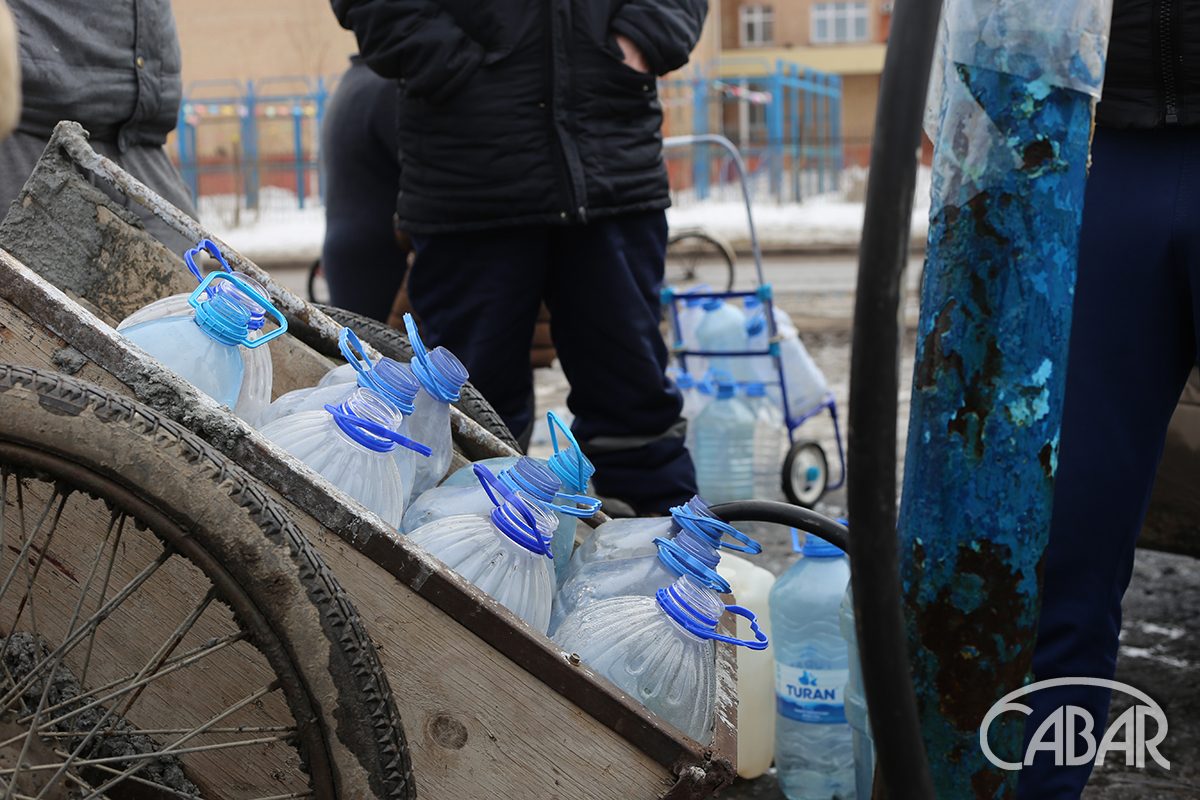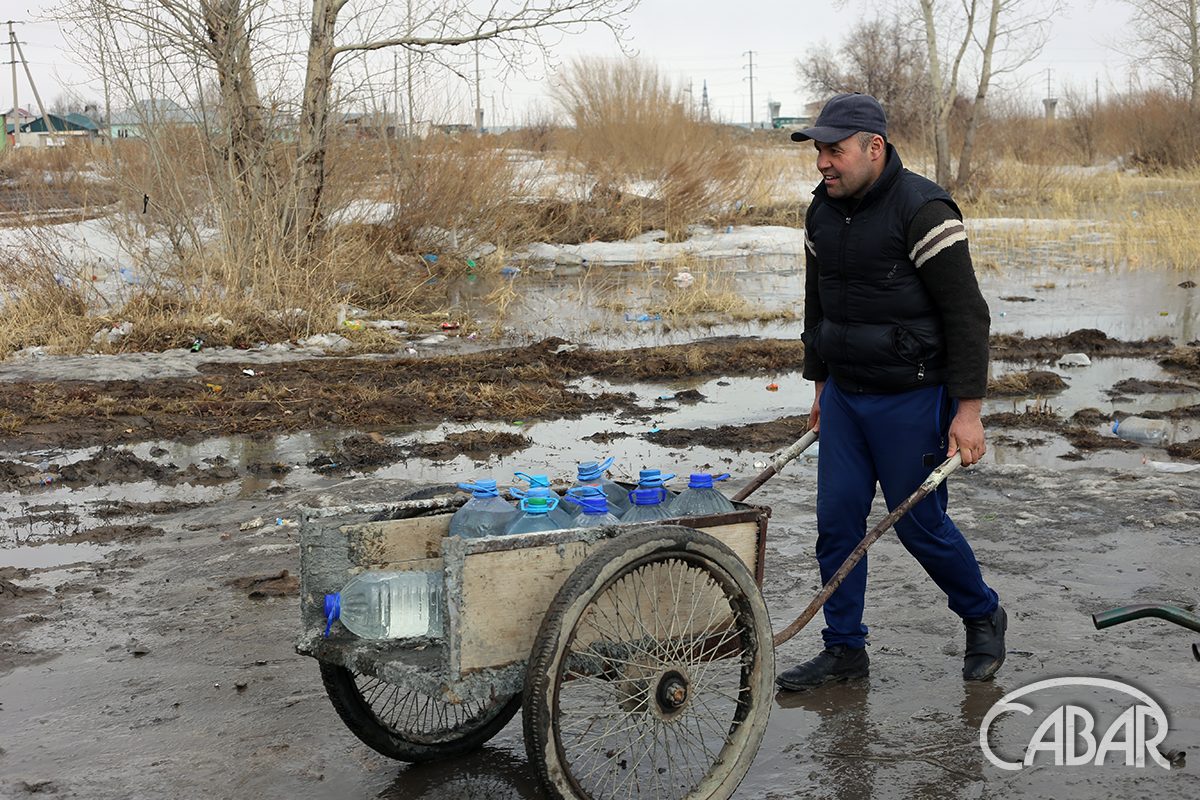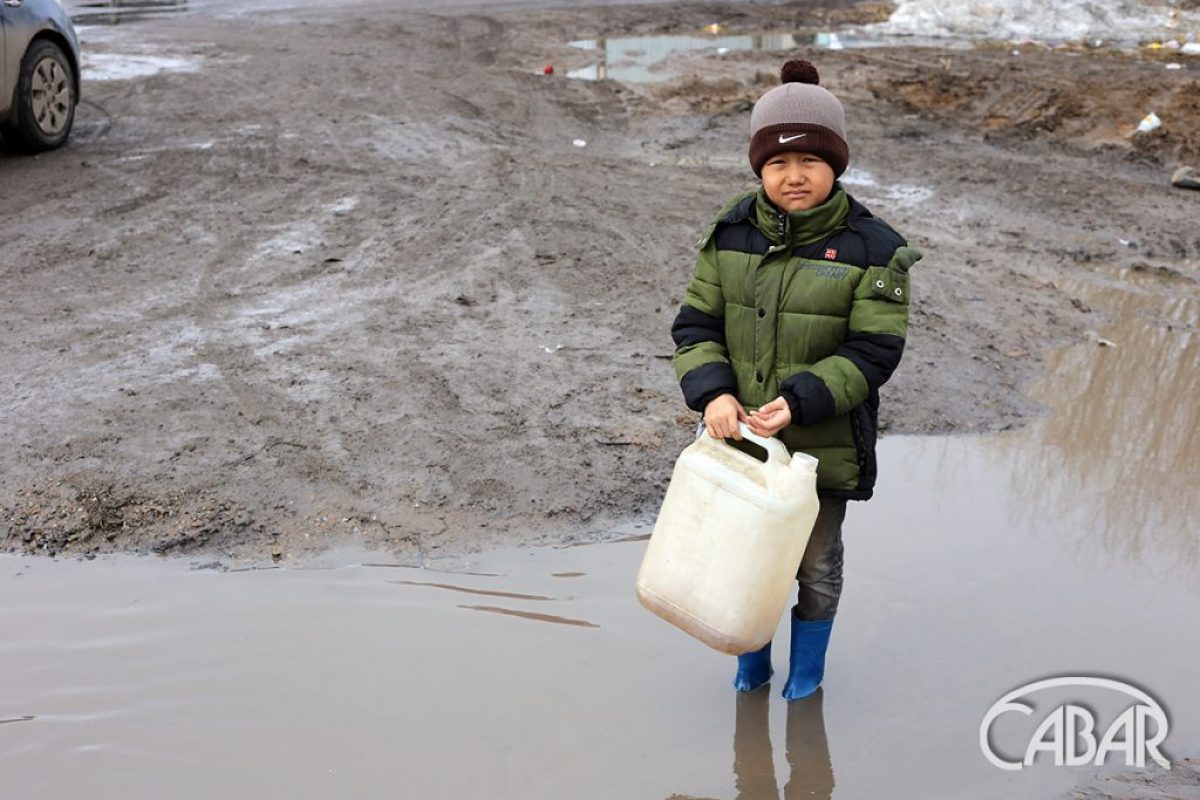«By 2050, Kazakhstan’s level of drinking water deficit can increase threefold if appropriate measures are not taken,» – says water columnist Kunduz Adylbekova, in her article written specifically for CABAR.asia.
Follow us on LinkedIn
Short overview of the article:
- Water scarcity in the world: what place does the Republic of Kazakhstan occupy; reasons for the shortage of drinking water in Kazakhstan, forecasts of an increase in the shortage of water resources by 2050;
- The state program of Kazakhstan for the provision of drinking water in all settlements of Kazakhstan “Drinking water”, which was implemented in 2002-2010, did not lead to predicted results and positive indicators.
- Infrastructure errors, low level of preparation of design estimates for the program implementation and multiple corruption schemes during the implementation process of the program caused damage to citizens of Kazakhstan in the amount of 250 million tenge;
- The second state program, “Ak-Bulak”, which began in 2011 and continues until 2020, taking into account the errors of the first program, it is criticized by organizations for the low level of technical analysis and the lack of an innovative approach to the implementation of water supply projects;
- The problem of regulation of issues on transboundary water resources of Kazakhstan with neighboring countries, in particular with China, is one of the main reasons for the shortage of water resources in Kazakhstan and the agenda in the interstate relations of the countries.
Overview of the situation of drinking water shortages in the world and in Kazakhstan
Over the past 30 years, the issue of water scarcity is relevant and one of the main issues around the world, along with issues related to climate change and other global challenges.
According to United Nation’s special World Water Assessment Report of 2019, global water consumption has been steadily increasing by about one percent annually since the 1980s. The reason for the growth is a combination of world population growth, socio-economic development and changing patterns of water consumption. Experts predict that global water demand will continue to grow at the same pace until 2050, which will lead to an increase of several tens of percent compared to the current level of water use. Also, analyzing the presented report, it should be noted the fact that more than two billion people on the planet live experiencing an acute shortage of water resources, and about 4 billion people around the world experience acute water shortages for at least one month a year. Water stress and scarcity levels will continue to increase as water demand increases and the effects of climate change increase.[1]
The problem of water scarcity is also one of the main problems for the Eurasian continent, in particular for Central Asian states.
Water is a key factor for the countries’ development and water scarcity is an urgent problem for the entire region.
The demographic growth of Central Asia is mounting at a tremendous pace, while the amount of fresh water for the population and the irrigation of new lands is decreasing due to irrational resource management. In addition, a change in the balance of water resources due to global warming will cause a decrease in the water resources of the region, which does not belong to water-surplus regions itself.
At the same time, the situation with water supply in the republic varies significantly by region. According to the National report on the state of the environment and on the use of natural resources of the Republic of Kazakhstan for 2016, “there are sufficiently water-supplied regions, for example, the Irtysh river basin (East Kazakhstan region), and at the same time there are regions where water is scarce (Mangistau region). Eight river basins have been allocated on the territory of Kazakhstan, the largest of which are Irtysh, Balkash-Alakol, Aral-Syrdarya and Zhayyk-Caspian (totally more than 90% of water resources).”[3]
Forecasts that by 2050 the water shortage in Kazakhstan will increase three times if effective measures are not taken to resolve this issue, were also voiced by the ex-Minister of Environment of the Republic of Kazakhstan — Nurlan Kapparov back in 2013.[4]
The reason for the shortage of drinking water in Kazakhstan is primarily in the deterioration of infrastructure and in the absence of innovative approaches during the construction of water supply systems. After the disintegration of the Soviet Union in 1990, gradually many settlements of Kazakhstan were cut off and deprived of drinking water supply due to the failed Soviet infrastructure, which was built in the middle of the last century.
Water is still supplied to remote settlements of Kazakhstan in limited quantities in tanks or in trucks, but at the same time Kazakhstan is conducting large-scale projects on innovative technologies in the use of natural resources. One of the ambitious programs is Kazakhstan’s transition to a green economy. In 2017, Kazakhstan for the first time held a global innovative exhibition on the transition to renewable energy and natural resources Expo-2017.
Prigorodny settlement (Поселок Пригородный) at the outskirts of Nur-Sultan. Hundreds of people drink water from one column, to get in a line for water; people get up from 6:00 in the morning. On weekends, they can even stand for 3-4 hours. Photo: cabar.asiaIn this regard, it is important to note the huge contrast between promising state programs and the lives of ordinary rural people, who are on the verge of a water and food crisis.
The first pancake is always lumpy. The first state program to combat the shortage of drinking water in Kazakhstan?
To comprehensively address the water supply issue, Kazakhstan adopted the “Drinking Water” program, which began in 2002 and ended in 2010. At the end of the “Drinking Water” program, there was a lot of negative feedback and criticism from the main beneficiaries of this program – residents of the regions in Kazakhstan. Therefore, this program cannot be considered successful and completed. Residents of villages and auls were indignant that, according to the results of the program, they could not get access to drinking water.
While implementing the “Drinking Water” program for 2002 – 2010, Kazakhstan suffered severe damage from government officials. As part of the program, facts of the inefficient use of budgetary funds and corruption schemes were identified, cases of poor-quality construction and reconstruction of water pipelines were identified, environmental damage was caused due to violations of certain standards during construction work, deadlines for technical work were violated, and no good quality drinking water provision was made.
Public outrage led to the creation of a public monitoring movement. One of the leading organizations in this direction was the public association “Angel”. This organization is engaged in public monitoring of state water supply programs in Kazakhstan and conducts field-monitoring visits to target areas under the current “Ak-Bulak” state program.[5]
By remark of the public association “Angel” to the Prosecutor General’s Office of the Republic of Kazakhstan (www.prokuror.kz), due to the above mentioned and other reasons, the state was damaged in the amount of more than 250 million tenge under the program “Drinking Water”.
Summarizing, we can analyze that the program may have been implemented on paper and in official reports, but access to drinking water in the regions remained limited.
Second chance: large-scale state program “Ak-Bulak”
After the completion of the “Drinking Water” program, Kazakhstan received its “second chance” and launched the new “Ak-Bulak” state water supply program in 2011 for a period of 9 years until 2020. This time, the state began to implement the program, by taking into account the mistakes made and the lessons learnt from the first “Drinking Water” program. By 2020, the program is planning to provide 85% of the rural population of Kazakhstan and 100% of the urban population with high-quality drinking water from centralized water supply systems.
According to the Program, the volume of investments and financing at the first stage was about 951 490.3 million tenge (about 2 million 450 thousand US dollars), later the amount of financing increased several times and continues to grow. Later, the “Ak-Bulak” program was introduced as one of the constituent parts of the “State Program for the Development of Regions until 2020” and the State Infrastructure Development Program “Nurly Zhol”.[6]
Despite the fact that the state program “Ak Bulak” began 8 years ago, it is very difficult to assess the success or failure of the project. However, at least at this stage it is already possible to single out major shortcomings that were made in the planning and implementation of this program.[7]
The “Ak-Bulak” drinking water accessibility program is drawing to a close, and nearly 2 million people in the country are not adequately provided with life-giving moisture.It is generally accepted that drinking water should be provided with appropriate infrastructure. It is known that water supply infrastructure systems consist of pipelines, canals, hydraulic structures, treatment plants, etc. Nevertheless, at the same time, the state program “Ak Bulak” does not provide for the construction of new hydraulic structures, while this is one of the main elements in the construction of water supply systems. Therefore, it is now possible to predict that, under this program, infrastructure facilities will not be implemented. The absence of such conditions will affect the main results of the program.
The need for the construction of hydraulic structures also proceeds from the geographical features of Kazakhstan. Kazakhstan is located on a flatland where there are no natural conditions for deepening for water accumulation, such as in neighboring Kyrgyzstan, and therefore, for the rational accumulation of water, it is recommended and necessary for Kazakhstan to build special hydraulic structures. Their construction solves not only the problem of water supply, but also the issue of floods in cities and villages of Kazakhstan in the springtime.[8]
Why are the water problems not a priority for Kazakhstan?
One of the main reasons for the reduction of water resources is the absence of a specialized ministry in Kazakhstan, which would deal with issues related to water resources and water policy.
If, for example, in Kyrgyzstan, water resources are 90% systemically important and play a vital role for the economy of Kyrgyzstan, then in Kazakhstan the main source of budget is another area – the raw material industry, such as oil, gas, uranium mining, etc. Therefore, issues related to other resources are not paramount for the country, despite the fact that water is a very vital issue for the entire population of Kazakhstan. Therefore, there is no full-fledged water policy in Kazakhstan, which would be engaged in a comprehensive analysis before designing and implementing government programs for water supply. As already noted, for example, the absence of special hydraulic structures in the “Ak-Bulak” program also leads to the fact that Kazakhstan suffers from leashes and floods. Even the capital of the Republic of Kazakhstan – the city of Nur-Sultan (Astana) is flooded, like dozens of other cities and towns of Kazakhstan due to the lack of a fundamentally new approach to the functioning of hydraulic structures.[9]
Water resources are reduced not only due to the negligent attitude of Kazakhstan to its water resources, but also because of cross-border issues on water dumping by neighboring states. Accordingly, for example, on the Ili River on the border with China, the question of acute shortage of water resources arises. Currently, the water intake from China to the Xinjiang Uygur Autonomous Region is about 3.5 km3 / year, in the coming years it will increase to 5 km3 / year, which will lead to shallowing and salinization of the largest lake in Kazakhstan – Balkhash. At the same time, over the past 20 years, the flow of the Ili River has decreased from 17.8 to 12.7 km3 / year. According to expert estimates, the implementation of these projects will lead to the fact that by 2050 the flow of the Ili River in Kazakhstan will decrease by 40%, and because of the commissioning of industrial (mainly oil producing and oil refining) enterprises in the river basin in China, pollution will increase in the river water. This will aggravate environmental problems in the Kazakhstani part of the river, which is already considered unfavorable, since the Ili tributaries in Kazakhstan are polluted by domestic, agricultural and industrial effluents. In general, abstraction of water with neighboring countries adversely affects Kazakhstan’s water availability. As the population of neighboring countries increases, withdrawal of water will increase, which will negatively affect the situation in Kazakhstan.[10]
By summing up, the following conclusions and recommendations can be distinguished:
- Uneven distribution of fresh water sources throughout the country, outdated water supply infrastructure, geographical features, poor water management, insufficient priority in shaping water policy, the raw material direction of the economy in relation to oil production and gas are just some of the reasons for the reduction of water resources in Kazakhstan;
- Kazakhstan needs to have a comprehensive approach to the formation of water policy, which includes the creation of core institutional frameworks for resolving issues related to water resources in the form of specialized departments (ministries, agencies). This recommendation also applies to other Central Asian countries. In the region, non-core departments, such as the Ministry of Agriculture or the Ministry of Energy, deal with water issues, but it must be understood that for integrated water supply it is necessary to have a separate institutional body, which is dealing with water policy;
- The state programs that were adopted by Kazakhstan did not solve the basic issues of drinking water supply in all settlements and villages of Kazakhstan. Before adopting and designing state water supply programs, it was necessary to conduct research and involve scientific experts, prepare technical justifications and conduct public monitoring in the planning and implementation of programs. For example, while planning state programs, Kazakhstan did not conduct research, technical diagnoses and carried out a low level of preparation of design and estimate documentation;
- The participation of citizens in assessing the quality of services provided to the population is necessary from the planning / development stage of state water supply programs;
In general, it should be noted that the problem of water scarcity in Kazakhstan is applicable to other states of the former Soviet Union. According to experts, states need to take measures to formulate effectively their water policies.
This article was prepared as part of the Giving Voice, Driving Change – from the Borderland to the Steppes Project implemented with the financial support of the Foreign Ministry of Norway. The opinions expressed in the article do not reflect the position of the editorial or donor.
[1] United Nation’s Special Report on the State of the World’s Water Resources of 2019. Access Mode: https://unesdoc.unesco.org/ark:/48223/pf0000367306
[2] Interview with Marat Koshumbayev, Doctor of Technical Sciences of the Republic of Kazakhstan, Academician of the International Informatization Academy under the United Nations.
[3] National report on the state of the environment and on the use of natural resources of the Republic of Kazakhstan for 2016. Access Mode: http://ecogosfond.kz/orhusskaja-konvencija/dostup-k-jekologicheskoj-informacii/jekologijaly-zha-daj/r-orsha-an-ortany-zhaj-k-ji-turaly-ltty-bajandamalar/
[4] Speech by Nurlan Kapparov. Link to Channel One Eurasia: https://www.youtube.com/watch?v=qK_OOxpJnf0
[5] Interview with Lyudmila Petrova. Director of NGO “Angel”
[6] Decree of the Government of the Republic of Kazakhstan dated November 9, 2010 No. 1176. Access mode: http://adilet.zan.kz/rus/docs/P1000001176/links#to
[7] Interview with Marat Koshumbayev, Doctor of Technical Sciences of the Republic of Kazakhstan, Academician of the International Informatization Academy under the United Nations.
[8] Interview with Murat Suyunbaev, candidate of geological and mineralogical sciences, professor, and Academician of the Russian Academy of Natural Sciences.
[9] Interview with Marat Koshumbayev, Doctor of Technical Sciences of the Republic of Kazakhstan, Academician of the International Informatization Academy under the United Nations.
[10] Rysbekov Y.H. Cross-border cooperation on international rivers: problems, experience, lessons, expert forecasts // Ed. V.A. Spiritual. Tashkent: SIC ICWC, 2009. P.202.


